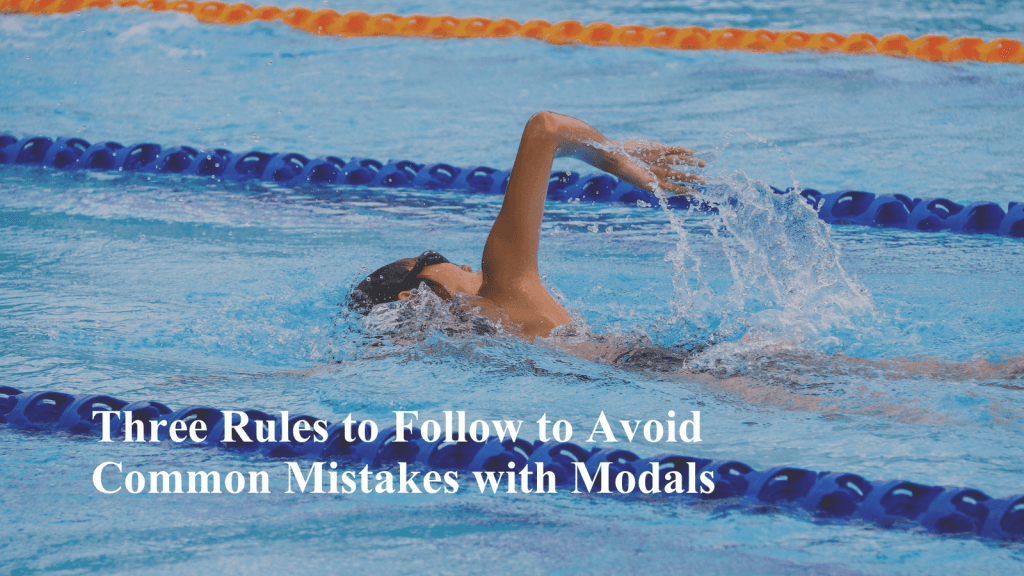Are you confused about modals? Are you interested in learning how to use can, could, may, might, should, ought, must, have to, shall, will, or would?
Today we will talk about how to use modal verbs properly. Many English learners make mistakes about the use of these special helping verbs. We will also study how to avoid these common mistakes. I know that the word modal verb doesn’t sound too exciting. But when you see what they are, you’d understand that we use these verbs all the time.
What are modals?
Modals are special verbs that behave irregularly in English. They are also known as modal auxiliaries or modal auxiliary verbs. They are different from normal verbs like eat, drink, visit, laugh, jump, dance, follow, etc. They give additional information about the function of the main verb that comes after it. These are verbs that express different kinds of things. When you use them, they express certainty, ability, willingness, necessity, permission, obligation, and possibility. Since they behave differently from regular verbs, they are a little confusing.
Modal verbs that are most commonly used in everyday conversations or writing are “can”, “could”, “may”, “might”, “should”, “ought to”, “must”, “have to”, “will”, “shall”, and “would”.
Three basic rules to follow
So, here are the three basic rules to follow to avoid the common mistakes that are made with the modal verbs.
1. Use the modal verb as is.
Don’t change its form and turn it into the present, future, or past forms. Don’t add anything to it. You can’t add s, ed, or ing.
Here’s the correct sentence:
- “Joan can swim.”
Not correct:
- “Joan cans swim.”
- “He mights go to sleep.”
- “She wills go to Spain next month.”
We should not change that modal verb ever. Leave it as it is.
2. Use the base form of the verb after a modal.
Don’t use “to” or the full infinitive verb “to”.
Here’s the correct sentence:
- “Clara might join them.”
Not correct:
- “Clara might to join them.”
- “You must to finish your dinner.”
- “You should not to smoke.”
- “They can to stay with us this summer.”
- “We would not to arrive in time for his speech.”
This is quite a common error, so be careful about the “to” there. Make sure not use the full infinitive form “to join” after the word might, will, should, may, or can. Just use the base form of the verb, which is “join”. You can say any of these correct sentences:
- Clara could join us.
- Clara might join us.
- Clara must join us.
- Clara should join us.
- They can stay.
- They can come.
- They can leave.
Just take note, no “to” after the modal.
3. If you need to use modals in the negative form, then use only “not” AFTER the modal verb.
Don’t add any extra words anymore. So, don’t use words like “isn’t”, “doesn’t”, “don’t”, “won’t”, “wasn’t”, “aren’t”.
For example:
Correct:
- “You should not drink too much.”
Not correct:
- “You don’t should drink too much.”
- “I don’t can swim.”
- “We don’t could call him.”
Notice in the correct sentence that “not” came after “should”.
You may have learned in other grammar lessons the words, such as “wasn’t”, “isn’t”, “don’t”, “aren’t”. And you’re probably excited about using them in your sentences. But using them with modals is wrong.
Remember though that there is one exception. It’s with the modal verb “have to”. If you use this in the negative form, you need to say, “You do not have to go there.” Here, you put “not” in the middle of “have to”. But with the other modals, you only say “You could not”, “You might not”, “You ought not”, “You shall not”, and so on. You can see that “not” always comes after the modal verb.
Other examples of “have to” in the negative form:
- “They don’t (do not have) have to bring all those bags.”
- “I don’t have to see it to believe it.”
- “We don’t have to bring umbrellas today.”
- “You don’t have to watch that movie.”
Another thing to remember is when you use “not” with “can” to express a negative statement, you always put them together. They actually become one word: “cannot”, and not “can not”. This is the only time you join a modal verb with “not” into one. But with the other modals, “not” is always a separate word.
For example:
Correct:
- “She cannot come to the wedding.”
Not correct: Using modals with “not” this way is wrong
- ”She maynot come to the wedding.”
- “She willnot come to the wedding.”
So other than “cannot”, the other modals should not be joined with “not” into one word.
Correct:
- “She may not come to the wedding.”
- “She will not come to the wedding.”
This time, let’s go over the common everyday modals and look at some examples. Here, we will see the communicative functions of these special verbs.
- CAN shows ability: Beth can dance very well.
- CAN shows permission: Can I use your car?
- CAN shows possibility: Driving in heavy rain can cause an accident.
- COULD expresses possibility: The roof could collapse if they don’t do repairs.
- MAY expresses permission: May I borrow your umbrella?
- MIGHT conveys possibility: I might move to Vietnam next year.
- SHOULD is used for giving advice: You should revise the intro to your essay.
- OUGHT TO is used to offer logical conclusion: After driving all day, you ought to be tired.
- MUST expresses strong obligation: You must be at the train station at 3PM to meet the guests.
- HAVE TO expresses strong obligation: You have to come on time if you don’t want to miss the bus.
- WILL is used to state a promise: I will stop eating sugary and salty foods.
- SHALL expresses suggestion as used in the first person: Shall I pour you a cup of green tea?
- WOULD shows habits in the past: He would visit his mom every Friday before she died.
- WOULD is used for a polite request: Would you close the windows, please?
Modals may be overwhelming and difficult to remember at first, but the more you practice the more you’re going to use them properly. Try to observe English sentences in books you read, radio programs, TV shows, or English native speakers talking, you can actually see that modal verbs are used all the time.
The more you’re exposed to the English language, the easier it will be for you to use modals naturally in your conversations.

